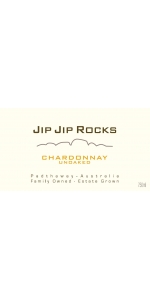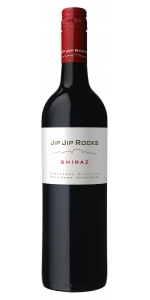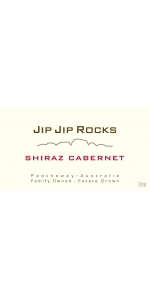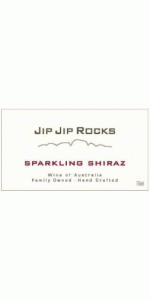Wine from Jip Jip Rocks

The Jip Jip Rocks Estate
The Bryson family has been involved in agriculture for five generations (150 years in South Australia) and has long recognized the potential of the Limestone Coast's maritime climate for producing premium quality grapes.
The Jip Jip Rocks Vineyards
In the early 90's, the family established the Jip Jip Rocks vineyard, in South Australia's Limestone Coast wine region. They have concentrated on growing premium varieties of Shiraz, Cabernet Sauvignon and Chardonnay. The vineyard consistently produces excellent fruit quality from low yielding vines. Only the best parcels of fruit are carefully selected throughout the vineyard and used in the Jip Jip Rocks label. Great attention is given to detail with the integration of fruit flavors and fine oak barrels and helps to produce classic handcrafted wine styles.
Their sole objective is to produce the best wines possible from their unique vineyard site. Planted on own rootstock and located in the Padthaway valley which is comprised of rich Terra Rosa soils their estate vineyard benefits from excellent sun exposure producing grapes of optimum flavor, color and tannin development. The warm summer days are moderated each evening by coastal winds that cool the vines and result in a longer ripening period. This extended period allows for the grape tannins and seed to fully ripen prior to being harvested, thus creating wines that are rich and supple on the palate.
Their pursuit of great wine can also be seen in the meticulous management of our vineyard. They strive for low crop yields and small grape bunches of intense flavor, and whilst they employ the latest technology in the vineyard to help us achieve vine balance and reduced vigor, they harvest when the fruit reaches full flavor development.
Jip Jip Rocks Chardonnay 2014 is made from 100 percent unoaked Chardonnay.
Light yellow with a pale straw hue. A classic nose of lemon, fresh stonefruit and melon. The palate is clean and fresh with mineral characters underpinning ripe pineapple and lime flavours. This wine will age beautifully over the next 4-5 years.
Winemaking report: Gentle pressing and free run juices create the base of this wine. Traditionally Jip Jip Rocks Chardonnay is a 2/3 blend fermented and matured in stainless steel and 1/3 fermented in stainless steel, which receives extended lees contact to add texture and complexity to the palate.
SALE!
Jip Jip Rocks Chardonnay is made from 100 percent unoaked Chardonnay.
Light yellow with a pale straw hue. A classic nose of lemon, fresh stonefruit and melon. The palate is clean and fresh with mineral characters underpinning ripe pineapple and lime flavours. This wine will age beautifully over the next 4-5 years.
Winemaking report: Gentle pressing and free run juices create the base of this wine. Traditionally Jip Jip Rocks Chardonnay is a 2/3 blend fermented and matured in stainless steel and 1/3 fermented in stainless steel, which receives extended lees contact to add texture and complexity to the palate.
Review:
Attractively fruited and fragrant, the wine shows golden peach, baked fig, vanilla and lemon peel aromas on the nose, followed by a succulent palate that’s creamy and lingering. Beautifully styled and highly enjoyable. At its best: now to 2023. AU$23.00. Dec 2019.
-Wine Orbit 92 Points
Jip Jip Rocks Shiraz is made from 100 percent Shiraz.
Jip Jip Rocks wine is synonymous with premium wines from South Australia’s Padthaway wine region. The vineyard is planted in some of the world’s oldest mineral rich soils and in the most temperate of maritime climates. The Jip Jip Rocks vineyard consistently produces excellent fruit quality from low yielding vines.
Only the best parcels of fruit are carefully selected throughout the vineyard and utilized in the Jip Jip Rocks label. Great attention to detail with the integration of fruit flavors and fine oak barrels helps produce classic handcrafted wine styles.
Lifted spice and ripe mulberry/blackberry aromas are complimented with chocolate, cedar and cinnamon on the nose. Well-integrated oak tannin provides flavors of clove and supple texture, which supports the rich plum, blackberry and mocha. The overall structure is supple and generous with fine-grained tannin and a lingering finish.
Pairs well with venison, ribeye steak, lamb.
Jip Jip Rocks Shiraz-Cabernet is made from 55% Shiraz, 45% Cabernet Sauvignon
Deep purple. Boysenberry and mulberry aromas with a hint of cedar and pepper. Similar berry fruits show through on the opulent, textured palate with a lingering finish.
Fermentation took place over 10 – 12 days in a combination of open and static fermenters. The temperature was closely monitored to ensure the wine retains its natural fruit expression. New and older French and American oak was used for the maturation of selected wine parcels over a period of 13 months. These parcels were put together from our family estate to best demonstrate the depth and character of our fruit, balanced by integrated oak.
Review:
It's gorgeously ripe and perfumed on the nose showing blackberry, sweet cherry, vanilla and hazelnut characters with a touch of pepper spice. The palate displays lovely weight and plump mouthfeel, leading to a lengthy supple finish. Brightly expressed and immediately appealing. At its best: now to 2027.
-Wine Orbit 93 Points
Jip Jip Rocks Shiraz-Cabernet is made from 55% Shiraz, 45% Cabernet Sauvignon
The Jip Jip vineyard is planted in some of the world’s oldest mineral rich soils and in the most temperate of maritime climates. It consistently produces excellent fruit quality from low yielding vines. Great attention to detail with the integration of fruit flavors and fine oak barrels helps produce classic handcrafted wine styles.
Deep purple. Boysenberry and mulberry aromas with a hint of cedar and pepper. Similar berry fruits show through on the opulent, textured palate, with a lingering finish.
This non vintage wine sparkles to the tune of a well balanced blend; predominantly 3 year old Shiraz aged in old French oak barrels allowing wonderful smooth integration of fruit and a rich weighty texture across the palate. This is blended with a touch of younger vintage Shiraz to bring ripe juicy varietal fruit characters to the finished wine.
Deep crimson color with brick red mousse and a fine bead. The aroma displays ripe plums, earthy notes and spice. Mouthfilling flavors of plums and prunes with hints of liquorice. Soft, creamy with a persistent cherry, chocolate and spice finish.
- back
Selected Options
Wineries
Categories
Pricing
Countries
Regions
Grape Types
Wineries
Organic/Free Shipping
Winery Notes:
Each year, we set aside the best barrels of our Cabernet Sauvignon from Napa Valley to produce Special Selection. Distinguished by extremely fine, velvety tannins and enjoyable upon release or with aging. A wine of structure with intense concentration of supple flavors and dark fruits. Special Selection is the only wine in the world honored twice as Wine Spectator magazine’s “Wine of the Year.”
Argot Pinot Noir Kanzler Vineyard is made from 100 percent Kanzler.
Pinot Noir finds its nirvana tucked away in the Goldridge soils and rolling topography of the cool and foggy Sebastopol Hills. Kanzler is one of Sonoma’s undisputed Grand Cru sites. This terroir produces deeply fruited wines with dazzling spice-box complexities, wonderful acidity and undeniable focus and freshness. A masterclass in Pinot Noir.
Review:
The 2021 Pinot Noir Kanzler Vineyard is deep ruby-purple in color. It explodes with bombastic scents of juicy blackberries, black raspberries, and tar with nuances of cracked black pepper, espresso, and crushed rocks. The full-bodied palate is laden with black fruit preserves flavors and savory nuances, framed by fine-grained tannins and lovely freshness, finishing long and spicy.
-Wine Palate 95 Points








